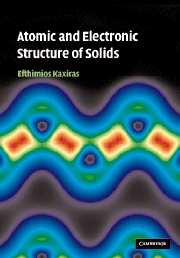Book contents
13 - Finite structures
Published online by Cambridge University Press: 06 July 2010
Summary
In this final chapter we deal with certain structures which, while not of macroscopic size in 3D, have certain common characteristics with solids. One such example is what has become known as “clusters”. These are relatively small structures, consisting of a few tens to a few thousands of atoms. The common feature between clusters and solids is that in both cases the change in size by addition or subtraction of a few atoms does not change the basic character of the structure. Obviously, such a change in size is negligible for the properties of a macroscopic solid, but affects the properties of a cluster significantly. Nevertheless, the change in the properties of the cluster is quantitative, not qualitative. In this sense clusters are distinct from molecules, where a change by even one atom can drastically alter all the physical and chemical properties. A good way to view clusters is as embryonic solids, in which the evolution from the atom to the macroscopic solid was arrested at a very early stage.
Clusters composed of either metallic or covalent elements have been studied extensively since the 1980s and are even being considered as possible building blocks for new types of solids (see the collection of articles edited by Sattler, mentioned in the Further reading section). In certain cases, crystals made of these units have already been synthesized and they exhibit intriguing properties. One example is crystals of C60 clusters, which when doped with certain metallic elements become high-temperature superconductors. There are also interesting examples of elongated structures of carbon, called carbon nanotubes, which can reach a size of several micrometers in one dimension.
- Type
- Chapter
- Information
- Atomic and Electronic Structure of Solids , pp. 459 - 512Publisher: Cambridge University PressPrint publication year: 2003



